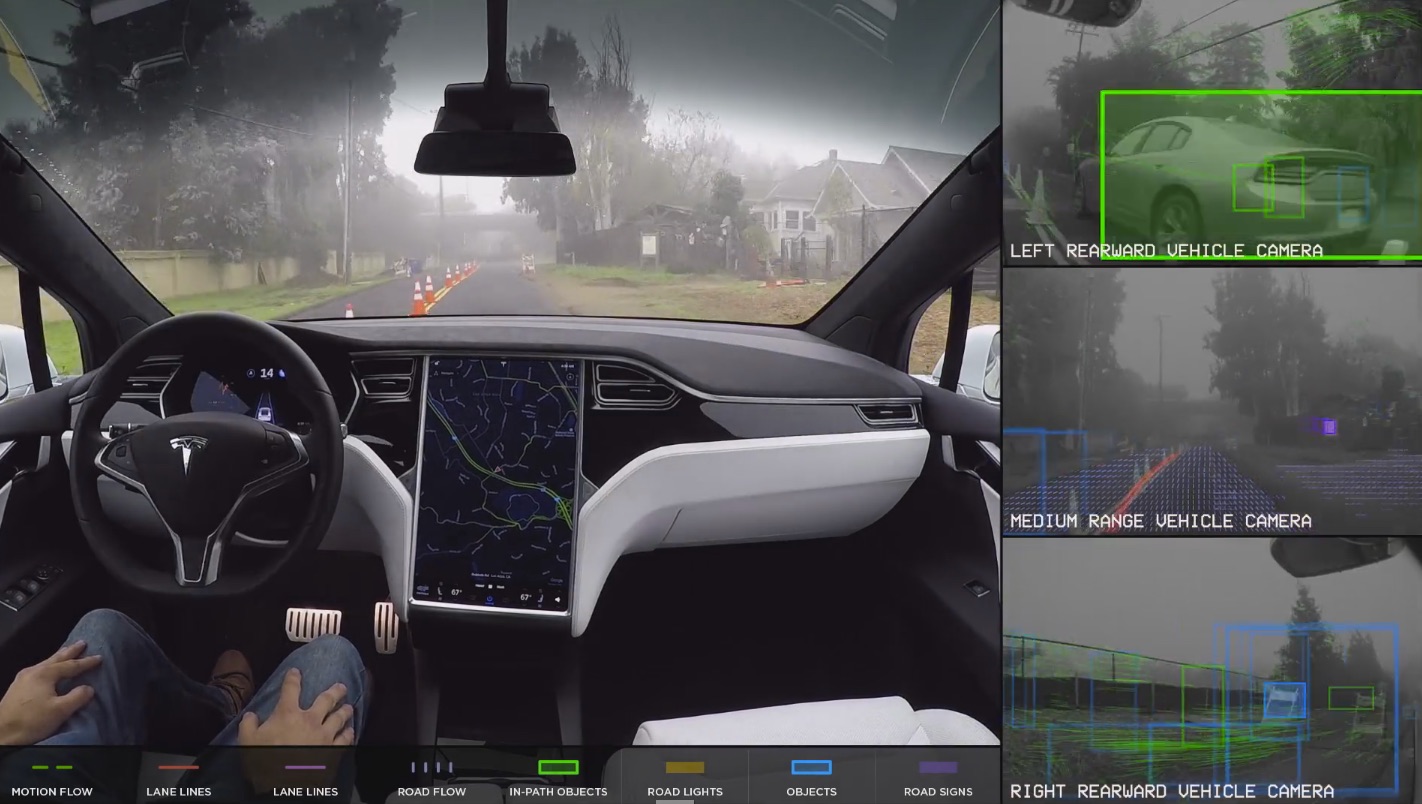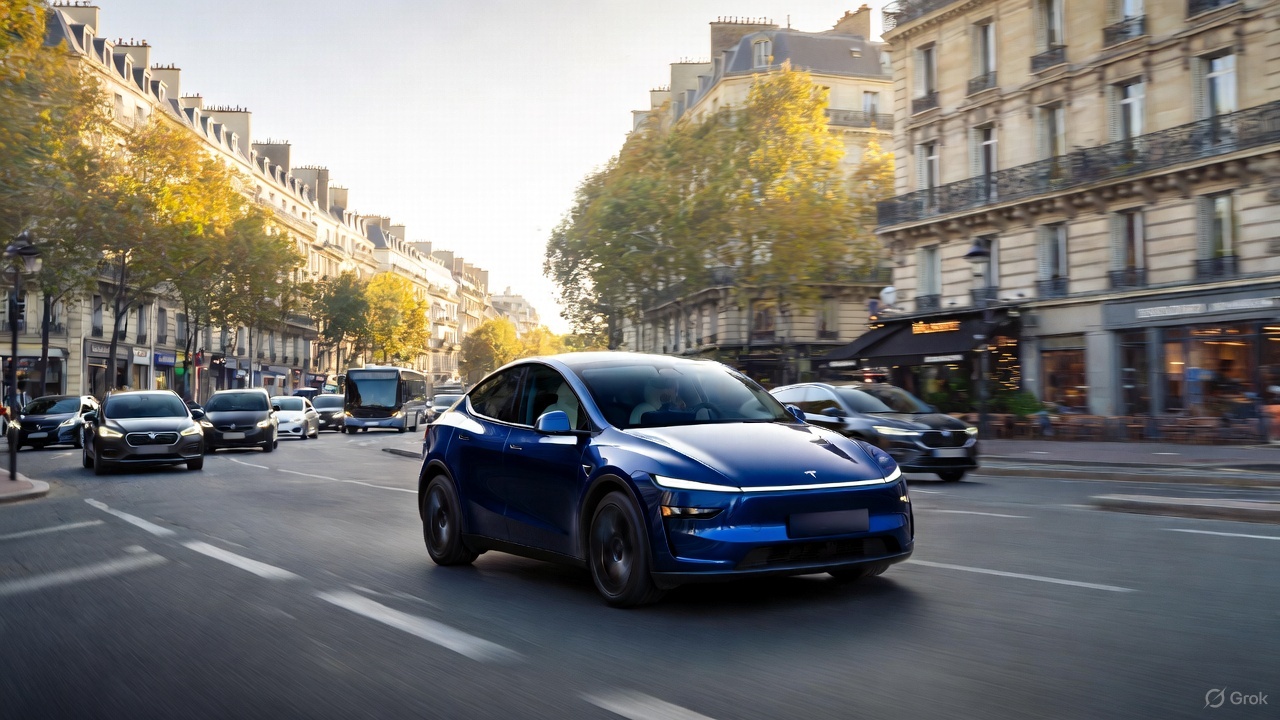

News
Netherlands ranks 1st in autonomous vehicle readiness, US places 3rd
The recently-released Automated Vehicles Readiness Index (AVRI) report by auditing firm KPMG has revealed that the Netherlands is the world’s most autonomous vehicle-ready country. The AVRI, which ranks nations across the globe according to their readiness for self-driving technologies, has also placed the United States in third place, right behind Singapore.
KPMG International evaluated countries according to four particular pillars. To make it to the index’s rankings, nations must perform well on policy and legislation, technology and innovation, infrastructure, and finally, consumer acceptance. The countries’ scores for each pillar are then aggregated and ranked.
Topping the list was the Netherlands, which was the clear world leader in the AVRI. The European nation ranked 1st in infrastructure, 2nd in consumer acceptance, 3rd in policy and legislation, and 4th in technology and innovation. The country’s aggregated score was 27.73 points, placing it well ahead of other nations in the index.
According to an EE Times report, the Netherlands’ impressive performance was attributed largely to its AV-friendly infrastructure. As of writing, the Netherlands boasts the highest density of electric vehicle charging points in the world. By 2016, the European nation already offered 26,789 charging points for the public. The country is also known for its well-maintained road network, which is currently rated as one of the world’s best.
In a statement to Geospatial World News, KPMG Netherlands Digital Advisory Manager Stijn de Groen noted that the country, even at this point, is already prepared for the upcoming autonomous vehicle revolution.
“The Dutch ecosystem for AVs is ready. The intensively-used Dutch roads are very well developed and maintained, and other indicators like telecoms infrastructure are also very strong. In addition, the Dutch government Ministry of Infrastructure has opened the public roads to large-scale tests with self-driving passenger cars and lorries,” the KPMG executive said, according to a GWN report.
AVRI’s second-placer on its rankings is Singapore, topping the list both in policy and legislation as well as consumer acceptance. According to KPMG, the Asian city-state received high marks in these pillars due to its recent amendment to its Road and Traffic Act, which allowed autonomous vehicles to be tested on public roads. Singaporeans were also found to be readily accepting of self-driving cars as a means of transportation.
Singapore also ranked 8th in technology and innovation and 2nd in infrastructure. The Asian city-state earned an aggregated score of 26.08 points.
The United States ranks third in the AVRI, despite ranking first in technology and innovation. Among all the countries in the index, the US earned near-maximum ratings on industry partnerships and research and development hubs, among other factors. The country’s overall score, however, was hampered by its low ratings on patents and overall usage of electric cars. The limited adoption and actual capabilities of fully autonomous vehicles also contributed to the country’s score.
Overall, the US ranked 7th in infrastructure, 10th in policy and legislation and 4th in consumer acceptance. The United States’ aggregated score in the AVRI is 24.75 points.
In a statement to GWN, KPMG US Infrastructure Advisory Principal Timothy D. Wilschetz noted that the country, while highly innovative in the autonomous vehicle sphere, still suffers from several setbacks. Wilschetz believes, however, that US regulators have the power to change this trend.
“The US has a highly innovative but largely disparate environment with little predictability regarding the uniform adoption of national standards for AVs. Therefore, the prospect of widespread driverless vehicles is unlikely in the near future. However, federal policy and regulatory guidance could certainly accelerate early adoption, particularly concerning limited freight applications such as truck platooning.”
Top 10 countries most prepared for the future of autonomous transportation by KPMG
- Netherlands
- Singapore
- United States
- Sweden
- United Kingdom
- Germany
- Canada
- United Arab Emirates
- New Zealand
- South Korea

News
Man credits Grok AI with saving his life after ER missed near-ruptured appendix
The AI flagged some of the man’s symptoms and urged him to return to the ER immediately and demand a CT scan.

A 49-year-old man has stated that xAI’s Grok ended up saving his life when the large language model identified a near-ruptured appendix that his first ER visit dismissed as acid reflux.
After being sent home from the ER, the man asked Grok to analyze his symptoms. The AI flagged some of the man’s symptoms and urged him to return immediately and demand a CT scan. The scan confirmed that something far worse than acid reflux was indeed going on.
Grok spotted what a doctor missed
In a post on Reddit, u/Tykjen noted that for 24 hours straight, he had a constant “razor-blade-level” abdominal pain that forced him into a fetal position. He had no fever or visible signs. He went to the ER, where a doctor pressed his soft belly, prescribed acid blockers, and sent him home.
The acid blockers didn’t work, and the man’s pain remained intense. He then decided to open a year-long chat he had with Grok and listed every detail that he was experiencing. The AI responded quickly. “Grok immediately flagged perforated ulcer or atypical appendicitis, told me the exact red-flag pattern I was describing, and basically said “go back right now and ask for a CT,” the man wrote in his post.
He copied Grok’s reasoning, returned to the ER, and insisted on the scan. The CT scan ultimately showed an inflamed appendix on the verge of rupture. Six hours later, the appendix was out. The man said the pain has completely vanished, and he woke up laughing under anesthesia. He was discharged the next day.
How a late-night conversation with Grok got me to demand the CT scan that saved my life from a ruptured appendix (December 2025)
byu/Tykjen ingrok
AI doctors could very well be welcomed
In the replies to his Reddit post, u/Tykjen further explained that he specifically avoided telling doctors that Grok, an AI, suggested he get a CT scan. “I did not tell them on the second visit that Grok recommended the CT scan. I had to lie. I told them my sister who’s a nurse told me to ask for the scan,” the man wrote.
One commenter noted that the use of AI in medicine will likely be welcomed, stating that “If AI could take doctors’ jobs one day, I will be happy. Doctors just don’t care anymore. It’s all a paycheck.” The Redditor replied with, “Sadly yes. That is what it felt like after the first visit. And the following night could have been my last.”
Elon Musk has been very optimistic about the potential of robots like Tesla Optimus in the medical field. Provided that they are able to achieve human-level articulation in their hands, and Tesla is able to bring down their cost through mass manufacturing, the era of AI-powered medical care could very well be closer than expected.
News
Tesla expands Model 3 lineup in Europe with most affordable variant yet
The Model 3 Standard still delivers more than 300 miles of range, potentially making it an attractive option for budget-conscious buyers.

Tesla has introduced a lower-priced Model 3 variant in Europe, expanding the lineup just two months after the vehicle’s U.S. debut. The Model 3 Standard still delivers more than 300 miles (480 km) of range, potentially making it an attractive option for budget-conscious buyers.
Tesla’s pricing strategy
The Model 3 Standard arrives as Tesla contends with declining registrations in several countries across Europe, where sales have not fully offset shifting consumer preferences. Many buyers have turned to options such as Volkswagen’s ID.3 and BYD’s Atto 3, both of which have benefited from aggressive pricing.
By removing select premium finishes and features, Tesla positioned the new Model 3 Standard as an “ultra-low cost of ownership” option of its all-electric sedan. Pricing comes in at €37,970 in Germany, NOK 330,056 in Norway, and SEK 449,990 in Sweden, depending on market. This places the Model 3 Standard well below the “premium” Model 3 trim, which starts at €45,970 in Germany.
Deliveries for the Standard model are expected to begin in the first quarter of 2026, giving Tesla an entry-level foothold in a segment that’s increasingly defined by sub-€40,000 offerings.
Tesla’s affordable vehicle push
The low-cost Model 3 follows October’s launch of a similarly positioned Model Y variant, signaling a broader shift in Tesla’s product strategy. While CEO Elon Musk has moved the company toward AI-driven initiatives such as robotaxis and humanoid robots, lower-priced vehicles remain necessary to support the company’s revenue in the near term.
Reports have indicated that Tesla previously abandoned plans for an all-new $25,000 EV, with the company opting to create cheaper versions of existing platforms instead. Analysts have flagged possible cannibalization of higher-margin models, but the move aims to counter an influx of aggressively priced entrants from China and Europe, many of which sell below $30,000. With the new Model 3 Standard, Tesla is reinforcing its volume strategy in Europe’s increasingly competitive EV landscape.
News
Tesla FSD (Supervised) stuns Germany’s biggest car magazine
FSD Supervised recognized construction zones, braked early for pedestrians, and yielded politely on narrow streets.

Tesla’s upcoming FSD Supervised system, set for a European debut pending regulatory approval, is showing notably refined behavior in real-world testing, including construction zones, pedestrian detection, and lane changes, as per a recent demonstration ride in Berlin.
While the system still required driver oversight, its smooth braking, steering, and decision-making illustrated how far Tesla’s driver-assistance technology has advanced ahead of a potential 2026 rollout.
FSD’s maturity in dense city driving
During the Berlin test ride with Auto Bild, Germany’s largest automotive publication, a Tesla Model 3 running FSD handled complex traffic with minimal intervention, autonomously managing braking, acceleration, steering, and overtaking up to 140 km/h. It recognized construction zones, braked early for pedestrians, and yielded politely on narrow streets.
Only one manual override was required when the system misread a converted one-way route, an example, Tesla stated, of the continuous learning baked into its vision-based architecture.
Robin Hornig of Auto Bild summed up his experience with FSD Supervised with a glowing review of the system. As per the reporter, FSD Supervised already exceeds humans with its all-around vision. “Tesla FSD Supervised sees more than I do. It doesn’t get distracted and never gets tired. I like to think I’m a good driver, but I can’t match this system’s all-around vision. It’s at its best when both work together: my experience and the Tesla’s constant attention,” the journalist wrote.
Tesla FSD in Europe
FSD Supervised is still a driver-assistance system rather than autonomous driving. Still, Auto Bild noted that Tesla’s 360-degree camera suite, constant monitoring, and high computing power mark a sizable leap from earlier iterations. Already active in the U.S., China, and several other regions, the system is currently navigating Europe’s approval pipeline. Tesla has applied for an exemption in the Netherlands, aiming to launch the feature through a free software update as early as February 2026.
What Tesla demonstrated in Berlin mirrors capabilities already common in China and the U.S., where rival automakers have rolled out hands-free or city-navigation systems. Europe, however, remains behind due to a stricter certification environment, though Tesla is currently hard at work pushing for FSD Supervised’s approval in several countries in the region.








